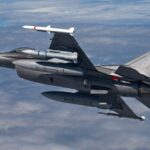
The Senate Appropriations Committee’s fiscal year 2020 defense budget pluses up the Air Force’s space procurement budget for fiscal year 2020, but the majority of the increase comes from shifting research-and-development funds for a future weather satellite to procure an off-the-shelf option. The committee’s budget, which was approved to move to the Senate floor Sept. 12, recommends $2.4 billion for Air Force space procurement – over $46 million more than was originally requested – and $3.8 billion for space-related research-and-development…

 By
By 











